
Brigham Young was an American religious leader and politician. He was the second president of the Church of Jesus Christ of Latter-day Saints from 1847 until his death in 1877. During his time as church president, Young led his followers, the Mormon pioneers, west from Nauvoo, Illinois, to the Salt Lake Valley. He founded Salt Lake City and served as the first governor of the Utah Territory. Young also worked to establish the learning institutions that would later become the University of Utah and Brigham Young University. A polygamist, Young had at least 56 wives and 57 children. He formalized the prohibition of black men attaining priesthood, and led the church in the Utah War against the United States.
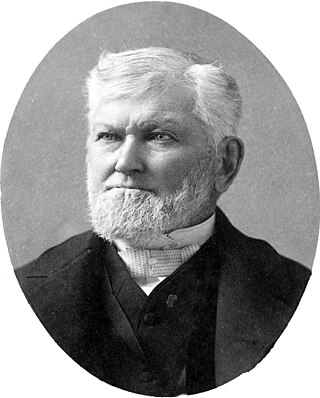
Wilford Woodruff Sr. was an American religious leader who served as the fourth president of the Church of Jesus Christ of Latter-day Saints from 1889 until his death. He ended the public practice of plural marriage among members of the LDS Church in 1890.

The Utah War (1857–1858), also known as the Utah Expedition, the Utah Campaign, Buchanan's Blunder, the Mormon War, or the Mormon Rebellion, was an armed confrontation between Mormon settlers in the Utah Territory and the armed forces of the US government. The confrontation lasted from May 1857 to July 1858. The conflict primarily involved Mormon settlers and federal troops, escalating from tensions over governance and autonomy within the territory. There were several casualties, predominantly non-Mormon civilians. Although the war featured no significant military battles, it included the Mountain Meadows Massacre, where Mormon militia members disarmed and killed about 120 settlers traveling to California.
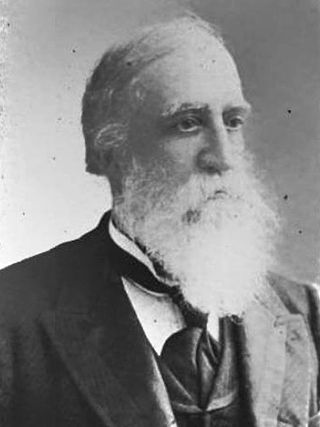
Joseph Smith III was the eldest surviving son of Joseph Smith and Emma Hale Smith. Joseph Smith III was the Prophet-President of what became the Reorganized Church of Jesus Christ of Latter Day Saints, renamed Community of Christ in 2001, which considers itself a continuation of the church established by Smith's father in 1830. For fifty-four years until his own death, Smith presided over the church. Smith's moderate ideas and nature set much of the tone for the church's development, earning him the sobriquet of "the pragmatic prophet".
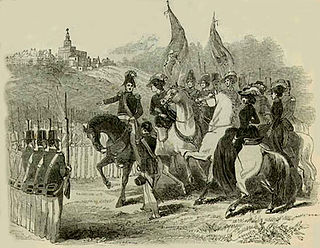
The Nauvoo Legion was a state-authorized militia of Nauvoo, Illinois, United States from February 4, 1841 until January 29, 1845. Its main function was the defense of Nauvoo and surrounding Latter Day Saint settlements, but it was also occasionally used as local law enforcement and paraded at ceremonies such as the laying of the cornerstone for the Nauvoo Temple. The Nauvoo Legion was unique among contemporary militias for its chain of command structure, its expanded functions of the court martial, and for operating at a city level.

George Quayle Cannon was an early member of the Quorum of the Twelve Apostles of the Church of Jesus Christ of Latter-day Saints, and served in the First Presidency under four successive presidents of the church: Brigham Young, John Taylor, Wilford Woodruff, and Lorenzo Snow. He was the church's chief political strategist, and was dubbed "the Mormon premier" and "the Mormon Richelieu" by the press. He was also a five-time Utah territorial delegate to the U.S. Congress.

Lot Smith was a Mormon pioneer, soldier, lawman and American frontiersman. He became known as "The Horseman" for his exceptional skills on horseback as well as for his help in rounding up wild mustangs on Utah's Antelope Island. He is most famous for his exploits during the 1857 Utah War.
The succession crisis in the Latter Day Saint movement occurred after the killing of the movement's founder, Joseph Smith, on June 27, 1844.
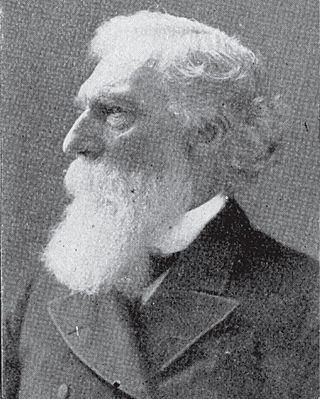
Daniel Hanmer Wells was an American apostle of the Church of Jesus Christ of Latter-day Saints and the 3rd mayor of Salt Lake City.
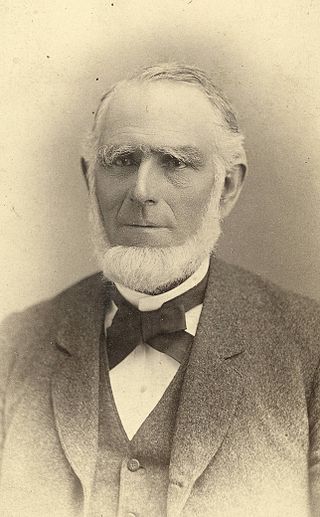
Abraham Owen Smoot was an American pioneer, businessman, religious leader, and politician. He spent his early life in the Southern United States and was one of seven children. After being baptized a member of the Church of Christ, predecessor to the Church of Jesus Christ of Latter-day Saints, Smoot served as a missionary in Kentucky, Tennessee, South Carolina, and England. He received no formal education, but learned to read as a child and later attended the School of the Prophets in Kirtland, Ohio. Like other early members of the LDS Church, Smoot practiced plural marriage, eventually marrying six women and having 24 children. After migrating west to Utah Territory, he was elected as the second mayor of Salt Lake City and maintained this position from 1857 to 1866. He was then assigned by Brigham Young to move to Provo, where he served as stake president and mayor from 1868 to 1881. He assisted financially in the construction of the Provo Tabernacle—today the Provo City Center Temple—as well as that of the Utah Southern Railroad. Smoot was the first president of the board of trustees of Brigham Young Academy (BYA)—which later developed into Brigham Young University (BYU). He was an early financial supporter of the institution and was nicknamed the "foster father" of the academy. His goal was to make education available to young Latter-day Saints. Today, the Smoot Administration Building at BYU is named after him.

The Colorado Territory was formally created in 1861 shortly before the bombardment of Fort Sumter sparked the American Civil War. Although sentiments were somewhat divided in the early days of the war, Colorado was only marginally a pro-Union territory. Colorado was strategically important to both the Union and Confederacy because of the gold and silver mines there as both sides wanted to use the mineral wealth to help finance the war. The New Mexico Campaign was a military operation conducted by Confederate Brigadier General Henry Sibley to gain control of the Southwest, including the gold fields of Colorado, the mineral-rich territory of Nevada and the ports of California. The campaign was intended as a prelude to an invasion of the Colorado Territory and an attempt to cut the supply lines between California and the rest of the Union. However, the Confederates were defeated at the Battle of Glorieta Pass in New Mexico and were forced to retreat back to Texas, effectively ending the New Mexico Campaign.

The Utah National Guard comprises both Army and Air National Guard components. The Constitution of the United States specifically charges the National Guard with dual federal and state missions. The National Guard is the only United States military force empowered to function in a state status.
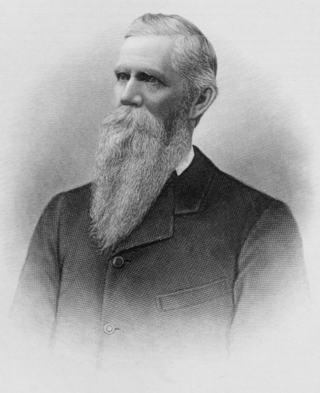
Robert Taylor Burton was a member of the presiding bishopric of the Church of Jesus Christ of Latter-day Saints from 1874 until his death. He was also one of the principal officers in the Nauvoo Legion during its Utah reconstitution and led the territorial militia against the Morrisites during the 1862 Moriste War.
The history of the Latter Day Saint movement includes numerous acts of violence both by members and their persecutors, continuing into modern times.
The Missouri State Militia was a federally funded state militia organization of Missouri conceived in 1861 and beginning service in 1862 during the American Civil War. It was a full-time force whose primary purpose was to conduct offensive operations against Confederate guerrillas and recruiters as well as oppose raids by regular Confederate forces. The militia at one time numbered more than 13,000 soldiers, but this force was reduced to 10,000 soldiers, by the United States government.
The history of Nauvoo, Illinois, starts with the Sauk and Meskwaki tribes who frequented the area, on a bend of the Mississippi River in Hancock County, some 53 miles (85 km) north of today's Quincy. They called the area "Quashquema", in honor of the Native American chief who headed a Sauk and Fox settlement numbering nearly 500 lodges. Permanent settlement by non-natives was reportedly begun in 1824 by Captain James White. By 1830, the community was called "Venus", and it was the site of the first post office in the county. In 1834 the name Venus was changed to "Commerce" in anticipation that the town would prosper under the United States' westward expansion.

Albert Perry Rockwood was an early Latter Day Saint leader and member of the First Seven Presidents of the Seventy of the Church of Jesus Christ of Latter-day Saints.

The Utah Territory during the American Civil War was far from the main operational theaters of war, but still played a role in the disposition of the United States Army, drawing manpower away from the volunteer forces and providing its share of administrative headaches for the Lincoln Administration. Although no battles were fought in the territory, the withdrawal of Union forces at the beginning of the war allowed the Native American tribes to start raiding the trails passing through Utah. As a result, units from California and Utah were assigned to protect against these raids. Mineral deposits found in Utah by California soldiers encouraged the immigration of non-Mormon settlers into Utah.
Martial law in the United States refers to times in United States history in which in a region, state, city, or the whole United States was placed under the control of a military body. On a national level, both the US President and the US Congress have the power, within certain constraints, to impose martial law since both can be in charge of the militia. In each state, the governor has the power to impose martial law within the borders of the state. In the United States, martial law has been used in a limited number of circumstances, such as New Orleans during the Battle of New Orleans; after major disasters, such as the Great Chicago Fire of 1871, the 1906 San Francisco earthquake, or during riots, such as the Omaha race riot of 1919 or the 1920 Lexington riots; local leaders declared martial law to protect themselves from mob violence, such as Nauvoo, Illinois, during the Illinois Mormon War, or Utah during the Utah War; or in response to chaos associated with protests and rioting, such as the 1934 West Coast waterfront strike, in Hawaii after the Japanese attack on Pearl Harbor, and during the Civil Rights Movement in response to the Cambridge riot of 1963.

The Utah Territorial Milita also known as the Nauvoo Legion was the territorial Milita for the United States Territory of Utah.















